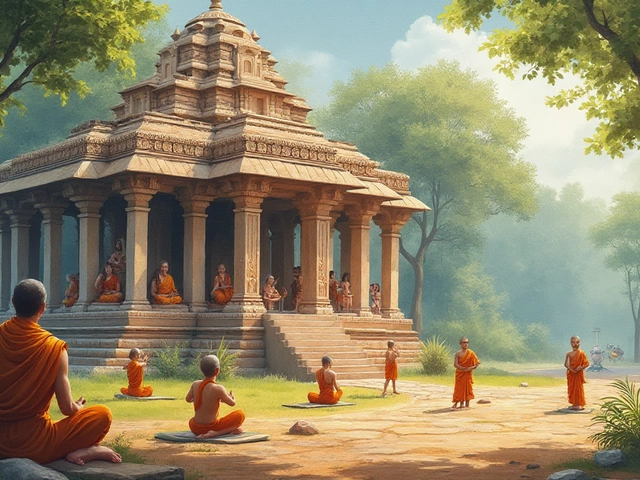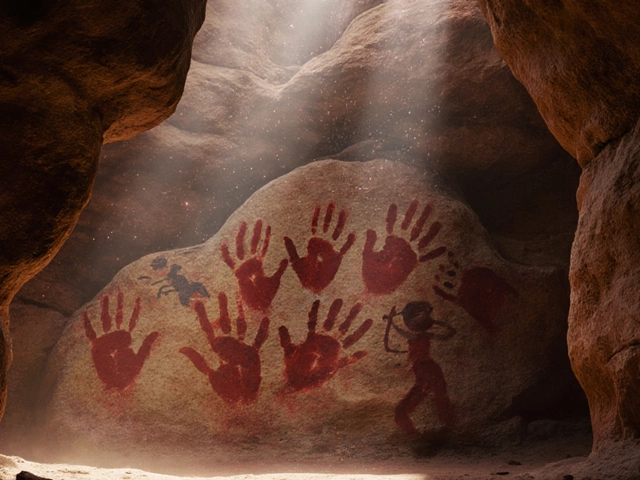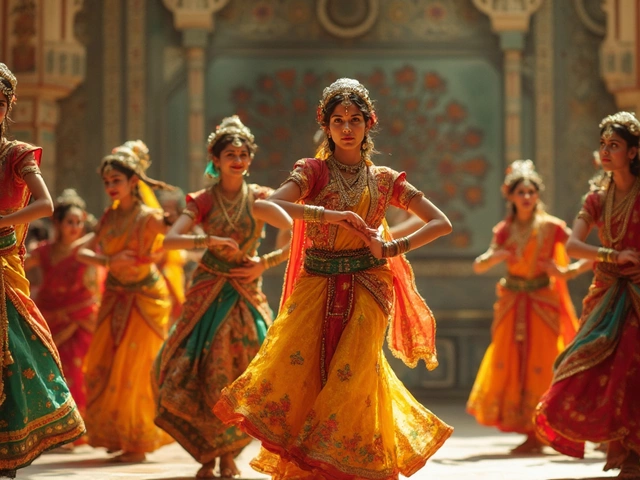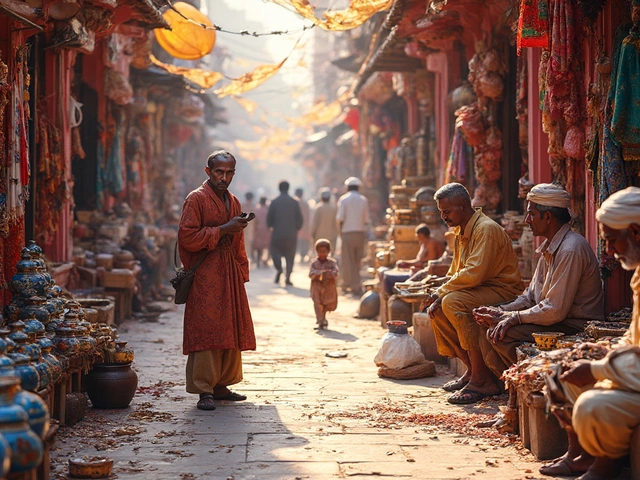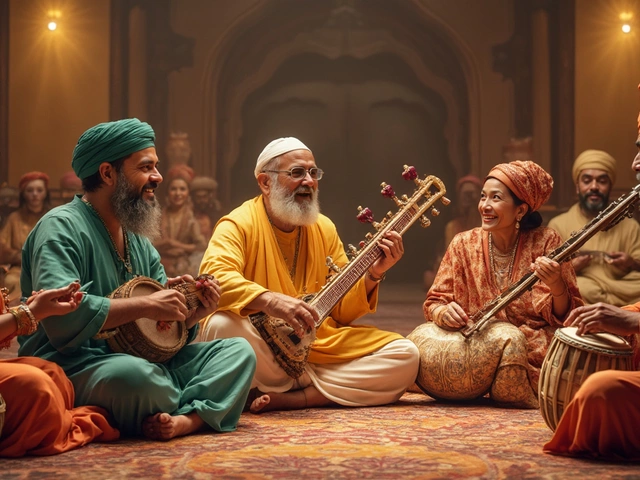Here’s something that stumps a lot of parents at a Bharatanatyam show: Why do some moves snap with crisp focus, while others bounce with odd rhythms nobody saw coming? It all comes down to jathis — the basic rhythmical building blocks that decide the beats every dancer steps on. Without jathis, those intricate foot patterns and complicated time cycles would just fall apart.
If you’re new to this, think of jathis as different ways to count while you dance. Each one lays down a set number of beats, and everything the dancer does — from stamping to finger snapping — rides the waves of these counts. Instead of getting lost in complicated music jargon, you’ll get a clear handle on each jathi and how it shows up in real dance and music. Let’s break them down so you can finally follow what’s happening next time you catch a performance with your kids, or even impress your friends with fun facts about Indian classical music.
- What is a Jathi in Bharatanatyam?
- Tishra Jathi: The Beat of Three
- Chatushra Jathi: The Popular Four
- Khanda Jathi: Counting in Fives
- Misra and Sankeerna Jathis: Sevens and Nines
What is a Jathi in Bharatanatyam?
This part is where many folks get confused with Bharatanatyam. In simple terms, a jathi is a way of grouping beats together — basically, it’s how dancers or musicians decide how to count. It’s the “math” that sets the mood for the footwork and hand movements you see in every performance.
Bharatanatyam uses rhythm patterns called talas. Each tala has a structure, and inside this structure, jathis tell you how many counts happen within one section, or “laghu.” The jathi changes how you clap, tap, or move your feet. If the jathi is three, you count in threes. If it’s five, you count in fives. This changes how the whole dance or song feels.
Here’s a quick way to look at what a jathi does:
- It sets the number of beats per “laghu” section in a tala.
- It guides not only the dancer’s movement, but also the way musicians handle rhythm.
- Switching jathis can totally change the mood from playful to serious, or from flowing to sharp.
Practical example: If you see a teacher clapping out rhythms with their hand — sometimes three counts, sometimes five — they’re switching jathis. Dancers spend ages practicing stepping in these patterns to get them absolutely right. Even percussion players have to master all five jathi types if they want their beats to sync with classic Bharatanatyam routines.
So, knowing your jathis is basically unlocking the whole rhythm puzzle hidden behind the fancy costumes and dramatic moves.
Tishra Jathi: The Beat of Three
Tishra Jathi is where everything starts to get interesting in Bharatanatyam. The word "Tishra" means three, and that’s all you need to remember: this jathi is all about counting in sets of three beats. If you’ve seen dancers glide through steps that feel quick and slightly off the usual “1-2-3-4,” you’ve probably watched Tishra Jathi in action.
Here’s how it works: every beat cycle in Tishra Jathi is divided into three counts. This pattern can show up in hand claps, bell rings, or the crisp tap of the dancer’s anklets. While it sounds simple, these three beats give performances a lively, unpredictable vibe. Dancers often use Tishra Jathi to build excitement or showcase quick footwork.
Tishra Jathi commonly shows up in dance segments called adavus. Teachers will often start students with this jathi so they get used to feeling patterns outside the more common four-beat cycle. It’s also popular in tani avartanams (solo rhythm sections in classical concerts), where percussionists show off their skills with rapid patterns based on threes.
The counts go like this: 1-2-3, 1-2-3, 1-2-3, and so on. Compare that with Chatushra Jathi’s 1-2-3-4 and you’ll see why things suddenly feel a bit more unusual to the ear.
Check out this quick comparison table for jathis and their counts:
| Jathi | Number of Beats per Cycle |
|---|---|
| Tishra | 3 |
| Chatushra | 4 |
| Khanda | 5 |
| Misra | 7 |
| Sankeerna | 9 |
Pro tip: If you want to spot Tishra Jathi in a performance, count along to see if you can catch a repeating “1-2-3” feeling. You can even practice at home by clapping in threes — it helps build a natural sense for these patterns and is honestly more fun with kids. Next time you hear a dance teacher say “Tishra Jathi,” you’ll know exactly what they’re talking about, and you won’t get lost when the rhythm skips to three.
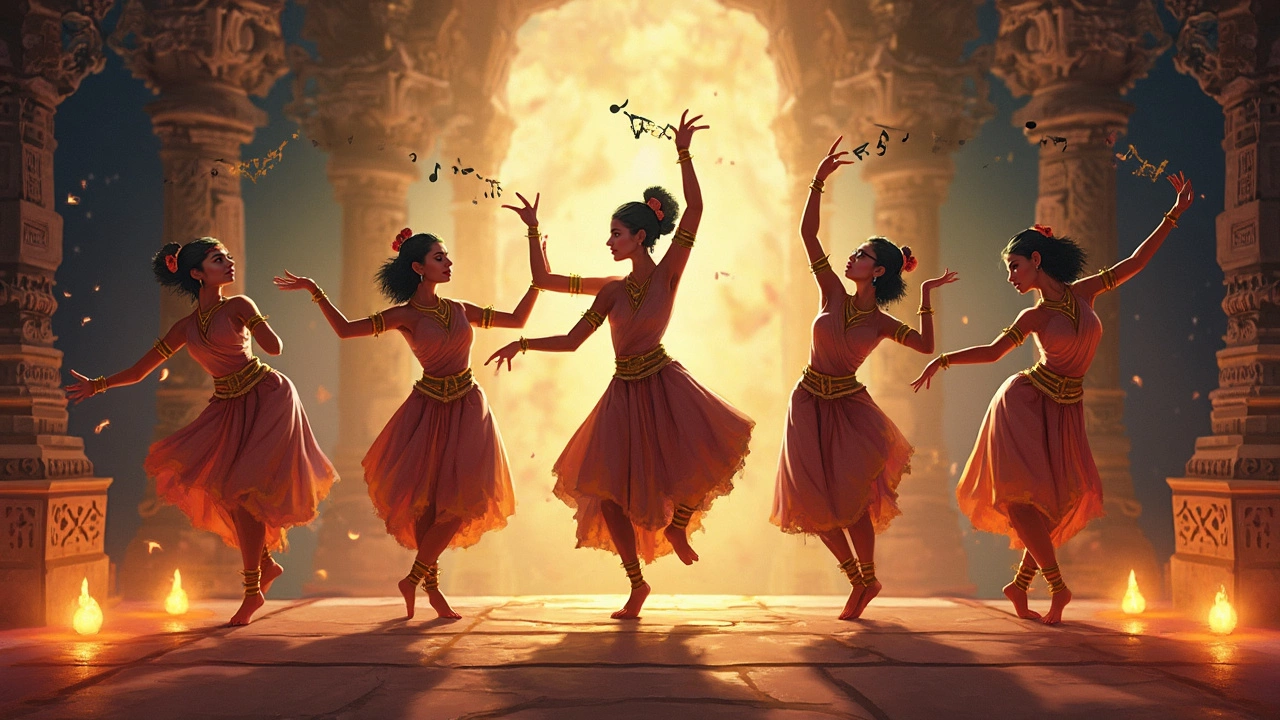
Chatushra Jathi: The Popular Four
If you’ve ever watched a Bharatanatyam performance and thought, ‘Wow, those steps feel natural and easy to follow,’ it’s probably because of Chatushra Jathi. This is by far the most common jathi, and what makes it so loved is its straightforward rhythm: four counts per cycle. Whenever someone talks about the basic “ta-ka-dhi-mi” syllables, they usually mean Chatushra Jathi.
Here’s how it works: every set, or ‘angam,’ in this jathi has four units. That means the dancer counts “1-2-3-4” and then repeats. You might see this in the famous Adavus (basic steps), where every foot movement matches each beat, creating patterns that are easy for both dancers and audiences to keep track of. Most studio classes start with these, so if your kid says they learned the Chatushra Adavu today, you’ll know exactly what they mean.
Chatushra Jathi isn’t just for beginners. Advanced routines use it too, letting performers play around with speed or layer other rhythms over the basic four. The structure makes it super flexible—whether there’s a slow, graceful move or a quick, sharp sequence, dancers can lean on this four-count backbone.
Here’s a funny quirk: in Indian classical music, especially when musicians talk about talas (rhythmic cycles), the Chatushra Jathi is the default. If someone says just “Adi Tala”—that’s the big one with eight counts—but unless mentioned otherwise, those are grouped as two sets of four beats, all thanks to the Chatushra Jathi rhythm.
- If your kid is learning dance and starts counting everything in fours at home—don’t worry, that’s normal. They’re getting comfortable with the foundation of Bharatanatyam.
- If you ever want to clap along at a show, listen for the “ta-ka-dhi-mi” pattern. Once you spot it, you’ll start catching the underlying Bharatanatyam groove everywhere.
Khanda Jathi: Counting in Fives
If you ever find yourself clapping along to Bharatanatyam and suddenly lose track of the beat, Khanda Jathi is probably to blame. It’s built on a five-beat cycle — this is what makes it sound just a little bit off-balance compared to the more common fours. But that’s exactly what gives it a unique energy.
In technical terms, Khanda Jathi means every unit (or “akshara”) has five sub-beats. So if a dancer uses a tala (rhythm cycle) like Adi tala with Khanda jathi, instead of four beats per unit, there are five. For folks trying to keep time, it’s usually counted as: 1-2-3-4-5, pause, and then repeat. That small shift makes the dance feel less predictable and a bit quirky.
- The pattern most dancers use for Khanda Jathi is clap, finger, finger, wave, finger. This sequence helps everyone on stage stay together, even as the music twists and turns.
- Khanda Jathi pops up a lot in jathiswaram pieces and complex dance items. Choreographers like to use it because it challenges both the performer and the audience to pay attention.
- If your kid is learning Bharatanatyam, ask them to clap out five beats, pause, and keep repeating. It’s a great way to feel the rhythm physically, and it helps with tricky practice sections at home.
In Indian classical music, Khanda Jathi isn’t just for dancers. Musicians also play around with this five-beat rhythm to keep things interesting, weaving it into both percussion solos and group performances. Once you start spotting the unusual five-count, you’ll have a whole new appreciation for just how flexible and fun Bharatanatyam rhythms can be.
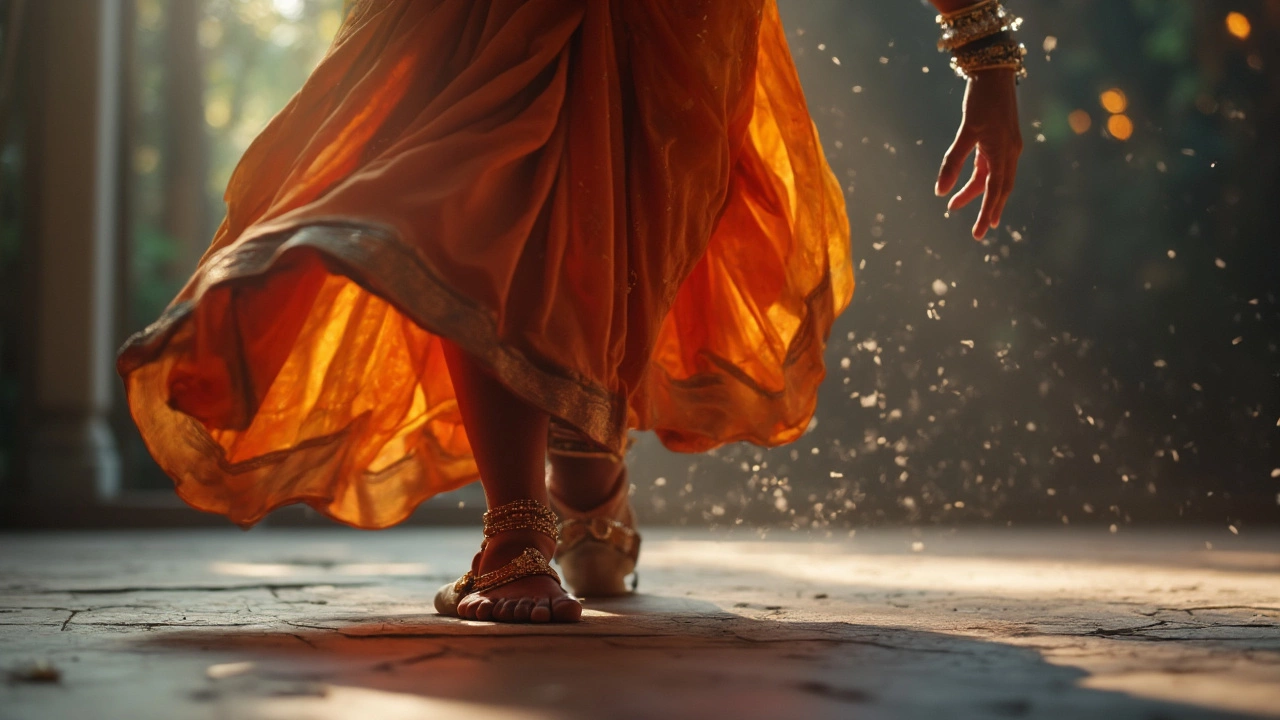
Misra and Sankeerna Jathis: Sevens and Nines
Now we’re getting into the trickier side of jathis. Two of the lesser-seen but super interesting types are Misra (7 beats) and Sankeerna (9 beats). Both push dancers and musicians to really stay sharp, since most folks aren’t used to counting in sevens or nines when thinking about music or dance steps.
Let’s look at how these unusual counts work in Bharatanatyam:
- Misra Jathi has 7 counts in one cycle. Common breakdowns are 3+2+2, or sometimes 4+3. So every time the music completes 7 units, a phrase ends and a fresh one starts. It’s like a song with a slightly uneven bounce, making performances more dynamic and less predictable.
- Sankeerna Jathi is built around 9 counts, such as 4+5 or 5+4. It’s the rarest of the five main jathis and shows up in pieces designed to seriously challenge both dancer and audience. You won’t hear Sankeerna much at beginner-level shows because the steps are hard to keep together.
Why do these matter? They challenge muscle memory. My kid Renzo gave up after just a few cycles of Sankeerna at music class—his feet couldn’t keep up! But once you nail these, your grasp of rhythm is next level, and you’ll spot tricky patterns in Indian classical music everywhere.
Here’s a quick breakdown to help you remember, and compare with the others:
| Jathi | Number of Beats | Common Breakdown |
|---|---|---|
| Tishra | 3 | 1+2 |
| Chatushra | 4 | 2+2 |
| Khanda | 5 | 2+3 |
| Misra | 7 | 3+2+2 or 4+3 |
| Sankeerna | 9 | 5+4 or 4+5 |
If you’re learning, try clapping or stepping each beat out slowly at first. Use a metronome app—set it to 7 or 9 and feel that different groove before trying it with real music or choreography. It’s totally normal to need a few tries, so don’t sweat mistakes. Mastering these makes you ready for even the most jaw-dropping Bharatanatyam performances.

